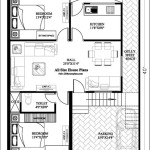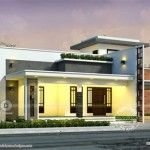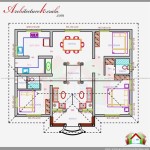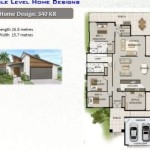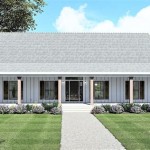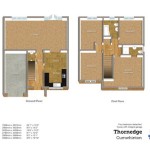Schröder House Floor Plans: A Deep Dive into Rietveld's Iconic Design
The Rietveld Schröder House, a UNESCO World Heritage site, stands as a testament to the innovative spirit of the De Stijl movement. Completed in 1924 in Utrecht, Netherlands, this architectural masterpiece continues to inspire and intrigue. A key element to understanding its brilliance lies in examining the Schröder House floor plans, which embody the principles of open space, flexibility, and the integration of interior and exterior.
Key Features of the Schröder House Floor Plans
The Schröder House floor plans showcase several remarkable features that set it apart from conventional designs of its time:
1.
Open Plan Concept:
Unlike traditional homes with fixed walls and rooms, the main living area of the Schröder House operates as a single, adaptable space. Sliding and rotating partitions allow for a dynamic configuration, enabling Mrs. Schröder to transform the layout according to her needs throughout the day.2.
Adaptable Living:
The flexibility offered by the movable partitions allows the main floor to be configured as one large open space or subdivided into smaller, more private areas. This provided unparalleled control over the flow and function of the home's interior.3.
Interplay of Interior and Exterior:
Large windows, balconies, and terraces blur the boundaries between inside and out. The floor plan emphasizes this connection with strategically placed openings that frame views of the surrounding landscape, integrating the exterior environment into the living experience.The Ground Floor: A Traditional Foundation
While the upper floor epitomizes De Stijl principles, the ground floor adheres to a more conventional layout. It houses the kitchen, dining room, study, and a maid’s room. This traditional approach to the ground floor provides a fascinating contrast to the revolutionary design of the upper level.
Key Aspects of the Ground Floor Plan
1.
Functional Spaces:
The ground floor accommodates the more utilitarian spaces often found in traditional homes.2.
Separate Entrance:
A separate entrance for the maid's quarters reflects the social norms of the time.The First Floor: A Dynamic and Adaptable Space
The first floor of the Schröder House is where Rietveld’s vision truly shines. This level is designed as a universally adaptable space, free from fixed internal walls. Sliding and rotating partitions allow the space to be reconfigured into various combinations of living, sleeping, and working areas.
Key Elements of the First Floor Plan
1.
Transformable Layout:
The sliding partitions are the heart of the adaptable design, enabling a fluid transition between open plan and defined rooms.2.
Multi-Functional Zones:
Each zone can serve multiple purposes, shifting from a bedroom to a living area or study depending on the arrangement of the partitions.3.
Emphasis on Light and Air:
Large windows and balconies flood the space with natural light and fresh air, further enhancing the connection with the outdoors.4.
Built-in Furniture:
Rietveld also designed built-in furniture specifically for the house, maximizing space and functionality. These pieces were integral to the overall design and complemented the adaptable nature of the floor plan.Understanding the Floor Plans: A Window into De Stijl
Studying the Schröder House floor plans offers a deeper understanding of the De Stijl movement’s principles. The emphasis on open space, functionality, and the integration of art and life is clearly evident in the design.
Key De Stijl Principles Reflected in the Floor Plans
1.
Abstraction:
The use of primary colors and geometric shapes in both the architecture and the built-in furniture reflects the De Stijl emphasis on abstraction.2.
Functionality:
The adaptable nature of the space emphasizes functionality, allowing the house to respond to the changing needs of its inhabitants.3.
Universality:
The open plan concept and the use of modular elements suggest a universal approach to design, creating a space adaptable to a variety of lifestyles.Analyzing the Plans: Insights into Modern Architecture
The Schröder House floor plans remain relevant today, offering valuable insights into the development of modern architecture. Its flexible design and emphasis on open-plan living continue to influence contemporary residential design.
Key Influences on Modern Architecture
1.
Open Plan Living:
The Schröder House's pioneering use of open plan living has become a standard feature in many modern homes.2.
Multi-Functional Spaces:
The concept of adaptable, multi-functional spaces continues to be a key trend in contemporary design, particularly in smaller urban dwellings.3.
Connection with Nature:
The emphasis on integrating the interior with the exterior through large windows and open spaces remains a central theme in modern architecture.The Schröder House floor plans offer a fascinating glimpse into the mind of Gerrit Rietveld and the revolutionary ideas of the De Stijl movement. By studying these plans, one can appreciate the innovative design solutions that continue to inspire architects and designers today.

Ad Classics Rietveld Schroder House Gerrit Archdaily

Ad Classics Rietveld Schroder House Gerrit Archdaily

Rietveld Schroder House Plan Ev Planı Mimari Evler

Plans Of Architecture Schroder House Rietveld Floor

Art Now And Then Rietveld Schroder House

Schroder House Plan Plantas De Casas Floor Stijl

Art Now And Then Rietveld Schroder House

Autocad Drawing Rietveld Schroder House In Utrecht Ground Floor Dwg

The Rietveld Schröeder House And Fifth Element Nexus Network Journal

Autocad Drawing Schroder House In Utrecht First Floor Dwg
Related Posts

